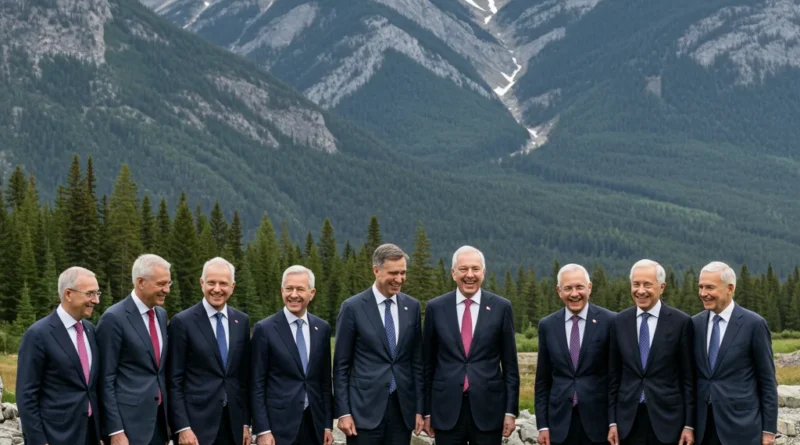G7 Summit in Canada Grapples with Global Crises as Leaders Seek Consensus
Kananaskis, Alberta, Canada – June 17, 2025 – Leaders of the Group of Seven (G7) nations convened in the picturesque Canadian Rockies this week for their annual summit, facing a complex agenda dominated by intensifying global conflicts, trade disputes, and the ever-present shadow of geopolitical tensions. While traditional joint communiqués may be forgone in favor of individual statements, the discussions underscored the urgent need for coordinated action on critical international issues.
The summit, hosted by Canadian Prime Minister Mark Carney, brought together the heads of state from Canada, the United States, France, Italy, Japan, Germany, and the United Kingdom, alongside representatives from the European Union. Invited outreach countries, including India and Mexico, also participated, highlighting a broader effort to address global challenges.
Middle East Crisis Takes Center Stage
The escalating conflict between Israel and Iran emerged as a dominant theme, with leaders grappling with how to de-escalate hostilities and prevent a wider regional conflagration. A joint statement from the G7 nations declared that “Iran can never have a nuclear weapon” and voiced support for Israel’s right to self-defense, while simultaneously calling for immediate de-escalation across the Middle East, including a ceasefire in Gaza.
However, U.S. President Donald Trump’s early departure from the summit and his subsequent comments on social media regarding his reasons for leaving, which he stated were “much bigger” than a ceasefire between Israel and Iran, signaled a potential divergence in approach among G7 members. This departure also followed Trump’s reassertion that Russia’s expulsion from the G8 in 2014 was a “big mistake.”
Ukraine War and Global Security
The ongoing war in Ukraine remained a significant point of discussion, with G7 leaders reaffirming their commitment to supporting Kyiv. While concrete new sanctions were not immediately announced, discussions reportedly focused on imposing further costs on Russia if a ceasefire is not achieved. The summit also included a dedicated working session on “A strong and sovereign Ukraine,” emphasizing continued support.
Economic Challenges and Trade Tensions
Global economic outlook and trade issues were high on the agenda. The G7 finance ministers had previously issued a joint communiqué to monitor “nonmarket policies and practices” that contribute to imbalances in global trade, widely seen as a veiled reference to China’s trade practices. The leaders aimed to build friendlier global supply chains, particularly for critical minerals. However, President Trump’s past imposition of tariffs and his transactional approach to trade continued to create a complex backdrop for these discussions.
India’s Role and the Global South
Prime Minister Narendra Modi of India arrived in Canada, marking his first visit to the country in ten years, amidst previously strained diplomatic relations. Modi emphasized his intention to “emphasize the priorities of the Global South” during the summit, participating in discussions on energy security, technology, and innovation, particularly the AI-energy nexus and quantum-related issues. His presence underscored the G7’s increasing recognition of the need to engage with emerging economies on pressing global matters.
Future of the G7
With Canada opting for a “chair’s summary” instead of a traditional joint communiqué, the summit highlighted the challenges in achieving unified statements among the G7 members, particularly with the U.S. leadership’s distinct approach to international relations. Despite these hurdles, the discussions in Kananaskis served as a crucial platform for the world’s leading industrialized democracies to address the multifaceted crises facing the globe and to seek avenues for cooperation, even if broad consensus remains elusive.
